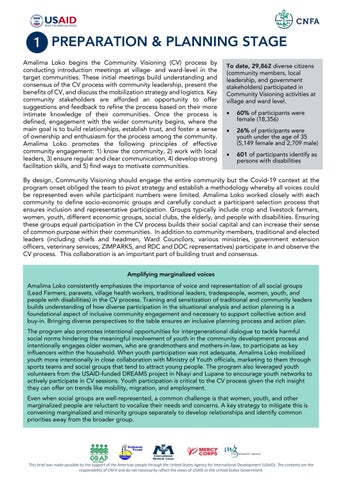PREPARATION & PLANNING STAGE
Amalima Loko begins the Community Visioning (CV) process by conducting introduction meetings at village- and ward-level in the target communities. These initial meetings build understanding and consensus of the CV process with community leadership, present the benefits of CV, and discuss the mobilization strategy and logistics. Key community stakeholders are afforded an opportunity to offer suggestions and feedback to refine the process based on their more intimate knowledge of their communities. Once the process is defined, engagement with the wider community begins, where the main goal is to build relationships, establish trust, and foster a sense of ownership and enthusiasm for the process among the community.
Amalima Loko promotes the following principles of effective community engagement: 1) know the community, 2) work with local leaders, 3) ensure regular and clear communication, 4) develop strong facilitation skills, and 5) find ways to motivate communities.
To date, 29,862 diverse citizens (community members, local leadership, and government stakeholders) participated in Community Visioning activities at village and ward level.
• 60% of participants were female (18,356)
• 26% of participants were youth under the age of 35 (5,149 female and 2,709 male)
• 601 of participants identify as persons with disabilities
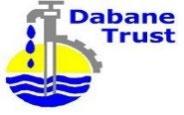
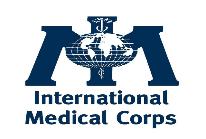


By design, Community Visioning should engage the entire community but the Covid-19 context at the program onset obliged the team to pivot strategy and establish a methodology whereby all voices could be represented even while participant numbers were limited. Amalima Loko worked closely with each community to define socio-economic groups and carefully conduct a participant selection process that ensures inclusion and representative participation. Groups typically include crop and livestock farmers, women, youth, different economic groups, social clubs, the elderly, and people with disabilities. Ensuring these groups equal participation in the CV process builds their social capital and can increase their sense of common purpose within their communities. In addition to community members, traditional and elected leaders (including chiefs and headmen, Ward Councilors, various ministries, government extension officers, veterinary services, ZIMPARKS, and RDC and DDC representatives) participate in and observe the CV process. This collaboration is an important part of building trust and consensus.
Amplifying marginalized voices
Amalima Loko consistently emphasizes the importance of voice and representation of all social groups (Lead Farmers, paravets, village health workers, traditional leaders, tradespeople, women, youth, and people with disabilities) in the CV process. Training and sensitization of traditional and community leaders builds understanding of how diverse participation in the situational analysis and action planning is a foundational aspect of inclusive community engagement and necessary to support collective action and buy-in. Bringing diverse perspectives to the table ensures an inclusive planning process and action plan. The program also promotes intentional opportunities for intergenerational dialogue to tackle harmful social norms hindering the meaningful involvement of youth in the community development process and intentionally engages older women, who are grandmothers and mothers-in-law, to participate as key influencers within the household. When youth participation was not adequate, Amalima Loko mobilized youth more intentionally in close collaboration with Ministry of Youth officials, marketing to them through sports teams and social groups that tend to attract young people. The program also leveraged youth volunteers from the USAID-funded DREAMS project in Nkayi and Lupane to encourage youth networks to actively participate in CV sessions. Youth participation is critical to the CV process given the rich insight they can offer on trends like mobility, migration, and employment.
Even when social groups are well-represented, a common challenge is that women, youth, and other marginalized people are reluctant to vocalize their needs and concerns. A key strategy to mitigate this is convening marginalized and minority groups separately to develop relationships and identify common priorities away from the broader group.

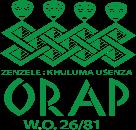
This brief was made possible by the support of the American people through the United States Agency for International Development (USAID). The contents are the responsibility of CNFA and do not necessarily reflect the views of USAID or the United States Government.
Situational Analysis and Vulnerability Ranking
Once communities agree to the CV process and commit to active participation, the preparation process can begin. The first step of the CV process demands that communities coalesce a common understanding of the village’s history, resources, challenges, and hopes for the future. To achieve this, communities undergo a series of meetings with exercises leading to the development of a Village Profile, which distils their assessment of the social, economic, and natural resources in their community to identify assets and areas for improvement. Hard copies of the Village Profiles with plans, maps, historical timelines, and other materials are owned by the Village Head and Village Secretary. This important and introspective step leads to a deeper understanding of the community, reflects core community values, and identifies emerging trends and issues. The Village Profiles serve as a recorded outline of physical, social, and historical community dynamics while also providing a basis for measuring development progress. In addition to the concrete outcomes of undergoing this analysis, participants gain skills in governance, planning, coordination, social inclusion, and conflict management.
Each Village Profile includes the following information:
• History of the community
• Major challenges, current and historical (and how community overcame them in the past)
• Main livelihoods or sources of income
• Resources (natural, physical, human, social, and financial)
• Existing socio-economic infrastructure (e.g., schools, clinics, boreholes, etc.)
• Any ongoing projects
• Active and inactive community organizations




• Relationships with local government

• Any existing development plans within the community and/or the local government

• Photos and documentation of any assessments done prior to creating the profile
A Community Visioning toolkit developed by the program guides this situational analysis and vulnerability ranking. The tools were all carefully assessed by Amalima Loko’s resilience and gender and social inclusion specialists to ensure they are risk-informed and employ a social inclusion lens to effectively draw out resilience factors and social dynamics. The tools take participants through a series of participatory exercises to construct the analysis and ranking.
Community Visioning Toolkit
Historical timeline
Amalima Loko facilitates a semi-structured group discussion to solicit information on historical events in the community. These are then organized into a historical timeline that typically begins with the founding of the community and attempts to identify all the landmark dates that had significant impact on people’s lives.
Creating historical profiles can assist communities to identify patterns over time and draw out their development priorities. Usually, this tool is applied with groups that include diverse community members, always with elderly people and those who are the historical custodians in that community. An important aspect of this activity is the insight it offers into resilience strategies developed during previous crises and hardships.
This brief was made possible by the support of the American
the United States Agency for International Development (USAID). The contents are the responsibility of CNFA and do not necessarily reflect the views of USAID or the United States Government.
people through
Community Resource Map
The community resource map helps understand the available resources within the village. Rather than developing an accurate map, the primary objective of this exercise is to uncover how community resources are perceived by different groups. The process uncovers resource challenges within the community and how these affect different populations by highlighting differences in access to, allocation of, utilization of, and management of resources. Visually demonstrating priorities and perceived resources and resource needs in a community offers valuable insight on the most effective ways of engaging the community.
Socio-economic Map
This tool asks participants to collaborate to draw a map showing the village’s social structures and institutions. Institutions and service providers identified in the exercise can include schools, churches, sports teams, fishing or farming cooperatives, women’s groups, youth groups, businesses such as inputs distributors, markets, NGOs, government offices, and a range of other entities.

Through the exercise a clear picture evolves as to what degree community needs are met by local service providers, what gaps exist, and what institutions may need capacity strengthening. Ultimately, the tool will help to improve the standards, delivery, and quality of service to the target community and provide insight on the perceptions of service provision within communities.
Seasonal Calendar
Facilitators work in groups to produce a livestock and a crop calendar by asking participants for details on how things change throughout the year. For example, when do diseases strike; when are people labouring in the fields; when do people commonly migrate for work; what are the income patterns at different points of the year? The information is then visualized into two diagrams depicting the changes across the seasons. These calendars are a foundational planning tool for Amalima Loko to understand the best windows of opportunity for development interventions and as communities think through the prioritization of their development plans. They offer an important assessment of food security, agriculture, and health in the community.
Vulnerability Ranking
The vulnerability matrix identifies potential hazards, vulnerable livelihood resources, and the coping strategies used by the community. While much of this information comes out of the previous tools, the exercise enables the community to collectively identify and delve more deeply into understanding their most significant vulnerabilities and existing capacities and gaps.
Participants work in their socio-economic groups and outline what they believe to be the community’s most important livelihood resources. These lists are then categorized by the entire group by:
• Natural resources the community relies on for food, income, and livelihoods (e.g., forests, water, soils, minerals)
• Key physical, man-made infrastructure community development outcomes (e.g. roads, clinics, schools, boreholes)

• Most important sources of income (financial resources) (e.g., from the sale of livestock, crops, remittances, labor)



• Most important skills or knowledge for livelihoods in this area (e.g., fishing, woodcarving)

• Key social resources/institutions, both formal and informal, for community well-being (churches, burial societies, VS&L groups)
From the complete list, participants identify three main hazards (shocks and stresses) that threaten these resources and use dot voting to assess the degree of impact of each. The exercise concludes with a facilitated discussion to understand how these risks affect socio-economic groups differently and outline known coping strategies.
This brief was made possible by the support of the American
the United States Agency for International Development (USAID). The contents are the responsibility of CNFA and do not necessarily reflect the views of USAID or the United States Government.
people through
Once complete, Village Profiles are shared with the wider community for further discussion and validation. The Profiles then serve as a launching off point for communities to agree on development priorities that are aspirational yet achievable, beginning at the individual level and filtering up to the community level. These goals are then articulated into a Vision Statement
Key findings from Community Visioning planning stage to date
Four major shocks identified as priorities to address: drought and water scarcity, livestock diseases, crop pests and diseases, and human wildlife conflict.
Most Vision Statements revolve around food security, access to clean water, improved incomes, vocational skills, and better livestock breeds.
Priorities expressed by communities in the action plans include increased water access to enable productive agriculture, improved health and nutrition and sanitation coverage, skills development in different livelihoods, and the conservation of natural resources all vital to sustainable food and nutrition security.
Identified activities included: dam construction, borehole drilling, dip tanks to address tick borne diseases, and irrigation schemes to enhance food availability.
Village Action Planning Meetings

Using the products from the assessment process, communities develop a comprehensive “road map” called a Village Action Plan which conveys the path to achieving their vision and objectives with specific steps. This marks a critical stage in the Community Visioning process where communities move from identifying needs, challenges, strengths, and capacities to defining concrete plans for their development.
Communities first think through potential solutions to the prioritized list of challenges they face. The goal is for community members to develop a common perception of a given issue and brainstorm concrete steps or actions for achieving the vision they have crafted together for their shared future. This collaborative problem-solving exercise is an important step in building consensus and local ownership over proposed interventions and solutions. Each socio-economic group has a role in defining the community’s goals and potential solutions, so the needs of marginalized groups are reflected in their plans.
Amalima Loko guides communities to develop their Action Plans with careful consideration of the factors and steps outlined in Figure 1.
1. Outline the specific solutions to address each identified issue.
2. Develop a list of activities that must be undertaken to achieve each objective.


3. Decide who is most appropriate to undertake each activity.
4. Decide when activities should occur.
5. Determine the resources needed, prepare a budget for each activity, and outline how resources will be mobilized
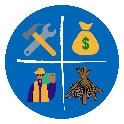



6. Identify who is responsible for monitoring implementation of the action plan.


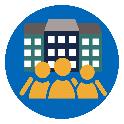


This brief was made possible by the support of the American people through the United States Agency for International Development (USAID). The contents are the responsibility of CNFA and do not necessarily reflect the views of USAID or the United States Government.
Figure 1: Village action planning process
Ward Planning Meetings


Interlocking planning approaches

Amalima Loko simultaneously works with community members, formed into Watershed Cluster Steering Committees, to map, identify, and prioritize the critical needs of the local watersheds. These priorities are considered in conjunction with the needs and actions laid out in the Village Action Plans and inform ward level planning and Transformation Plans. Prioritized actions can include hard infrastructure like boreholes and irrigation schemes or conservation efforts like erosion control measures.
Amalima Loko seizes the opportunity of the ward-level planning process to bring village representatives from the CV and watershed processes to present and seek to integrate their Village Action Plans and Watershed Cluster Plans into ward-level development plans referred to as Ward Transformation Plans. Ward planning meetings include local leadership and government stakeholders such as councillors, village heads, chiefs, headmen, religious leaders, ministry officials, and Rural District Council and District Development Coordinator representatives. The Ward Transformation Plans identify, prioritize, and set the course of development actions for the ward for the coming five to ten-year period.
COMMUNITY ACTION STAGE


Rural District Councils use the final Ward Transformation Plans to coordinate implementation of development activities throughout the ward. The village representative at the Ward Planning Meetings brings back the details of the selected ward priorities to their village. Village Development Committees (VIDCOs) then work with Community Action Groups (CAGs; includes Village Savings and Loans groups, Care Groups, Community Health Clubs, Male Champions Groups, youth groups, Asset Management Committees, etc.) to plan and implement activities outlined in their Village Action Plans. Amalima Loko supports government stakeholders and traditional leadership in engaging with CAGs to conduct community- and household-level interventions using the community’s and households’ own assets and capacities, which empowers groups, builds confidence, and strengthens social cohesion. Amalima Loko also trains community leaders and volunteers on leadership, monitoring, accountability, conflict resolution, and team management. Amalima Loko provides direct funding and support for the highestpriority projects within identified in Ward Transformation Plans within the program’s scope such as water management, land use, income generation, and nutrition and health work.
Already the organized efforts of Amalima Loko communities are paying off, as governmental and nongovernmental service providers have acted on elements of some of the developed plans. Communities themselves are also assessing their resources from sources like remittances and sales of in-kind contributions to start implementation of the work outlined by their community plans

SUSTAINING STAGE
As communities move from planning to implementation, Amalima Loko’s role shifts to supporting the identification and development of the resources, skills, capacities, and linkages needed to sustain community planning and action after the program ends. Community Visioning is designed to be iterative and ongoing, and communities are encouraged to set benchmarks to monitor and measure their progress towards achieving their vision over time. Managing community development activities requires monitoring for results, challenges, opportunities, and lessons learned and community members must be included in this process. Activities in this stage include annual review meetings, periodic community progress review meetings, learning visits, and local celebrations and exhibitions to motivate community actors. As the program winds down, support of VIDCOs and CAGs gradually transitions to district- and ward-level Government of Zimbabwe staff and other local actors. By the end of the program, these Community Action Groups and local stakeholders will fully drive their own development process
This brief was made possible by the support of the American people through the United States Agency for International Development (USAID). The contents are the responsibility of CNFA and do not necessarily reflect the views of USAID or the United States Government.
COMMUNITY VISIONING INFORMS PROGRAM PLANNING

Community Visioning is considered an aspect of BHA’s Refine and Implement methodology for program implementation. As such, capturing key details from the process to inform refinements to the program’s implementation plans is critical. Some findings that informed major programmatic shifts are outlined below:
• There is a lack of trust in grain banks due to perceived favoritism and a lack of transparency and there are no known banks in the program area. Amalima Loko determined that grain banks are unlikely to be successful due to the many barriers they face and were dropped from the program as a communal safety net. Instead, the program decided to promote access to community safety nets by making sure the communities are well organized to benefit from the available safety nets from the government and NGOs and that government and non-governmental service providers are effectively marketing the available safety nets to communities.
• Village savings and loans (VS&L) groups are common throughout the project area. While the social funds from VS&L groups are in some areas used as safety nets, they are exclusive to contributing members. Amalima Loko removed VS&Ls as a community safety net strategy and instead approached VS&Ls as an intervention to improve financial management.
• Water scarcity was identified as a major challenge in the target communities. Amalima Loko learned there was a clear and urgent need for improved water access in the rural communities and strong opportunities for boreholes to have significant community impact if properly installed and managed. Due to this learning, Amalima Loko increased the target for borehole drilling and rehabilitation from 150 boreholes to around 500 boreholes.
• Amalima Loko identified human wildlife conflict as a major shock to communities (which was supported by findings from several R&I studies) and prioritized piloting and scaling up innovate approaches to address it. For example, the program launched a chili strings pilot to deter elephants from cultivated areas, and with its success, will continue to scale up support for this method in other program districts.

• The CV process revealed that nearly all citizens throughout the program implementation areas are participants in the government-led Intwasa program promoting Conservation Agriculture methods. This led to a major shift away from several activities that had planned to focus on promoting CA as they would duplicate or be overshadowed by these government efforts. Instead, Amalima Loko is working with the same Lead Farmers to offer training in other areas such as water harvesting and soil and moisture conservation, and to fill any gaps not covered by the Intwasa program.
COMMUNITY ACCOMPLISHMENTS TO DATE

• 562 Village Action Plans developed.

• 89 Ward Transformation Plans developed.
• 99 villages began implementing collective actions in line with their Ward Transformation Plans, using their internal community resources and partnerships with the private sector, government, and NGOs.
• 7,242 (34% of 21,390 total) community members in the project area participated in collective actions the process of creating and strengthening social bonds by working together toward a common goal and not just the output of what is constructed.


• Held four Amalima Days community-led celebrations to recognize and offer support to volunteers and groups, to strengthen government service providers’ awareness of these groups, and to celebrate progress to date with the CV process.
• Amalima Loko supported communities with prioritized actions from their Ward Transformation Plans, including drilling and rehabilitating boreholes and implementing soil conservation works on gullies that were impacting schools, health facilities, and grazing lands.
• Communities are identifying opportunities and mobilizing resources to implement their vision. In Tsholotsho, community members are contributing funds towards the construction of boreholes and engaged surveyors to site the boreholes. In Binga, villages are working with service providers to install solar pumps for boreholes and construct schools.
Through participation in the CV process and with the Ward Transformation Plans, local government representatives are more aware of community priorities and have committed to using the plans to inform prioritization during their annual budgeting process.
This brief was made possible by the support of the American people through the United States Agency for International Development (USAID). The contents are the responsibility of CNFA and do not necessarily reflect the views of USAID or the United States Government.








